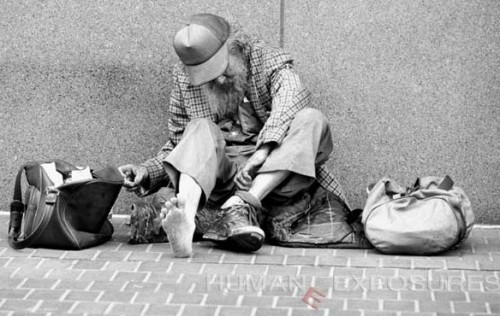A year ago, HUD, the VA and U.S. Interagency Council on Homelessness (USICH) reported that there were 49,933 homeless veterans in America, a decline of 33% percent (or 24,837 people) since 2010. This included a nearly 40% drop in the number of veterans sleeping on the street.
A year later (January 2015) Veteran homelessness has continued drop all across the country. Fourteen of the 100 largest metro areas in the U.S. reduced veteran homelessness by 50% over the past three years, some by as much as two-thirds. Phoenix and Salt Lake City have already eliminated it.
HUD, VA, USICH, and local partners have used evidenced-based practices like Housing First and federal resources like HUD-VASH (the HUD-Veterans Affairs Supportive Housing voucher program) to get veterans off the street and into stable housing as quickly as possible. Since 2008, the HUD-VASH program has served a total of 74,019 veterans.
U.S. Department of Housing and Urban Development Secretary Julián Castro said:
We have an obligation to ensure that every veteran has a place to call home. In just a few years, we have made incredible progress reducing homelessness among veterans, but we have more work to do. HUD will continue collaborating with our federal and local partners to ensure that all of the men and women who have served our country have a stable home and an opportunity to succeed.
To accelerate progress on meeting the goal of ending veteran homelessness by 2015, First Lady Michelle Obama, HUD and the VA launched the Administration’s “Mayors Challenge to End Veteran Homelessness” last year, and so far more than 210 mayors, county and state officials have committed to ending homelessness among veterans in their communities.
The federal government has provided significant new resources to help communities pursue the goal of ending homelessness among veterans. Communities that target these resources strategically are making significant progress and can end veteran homelessness in their communities in 2015.
These strategies include: a) Using a Housing First approach, which removes barriers to help veterans obtain permanent housing as quickly as possible, without unnecessary prerequisites; b) prioritizing the most vulnerable veterans—especially those experiencing chronic homelessness—for permanent supportive housing opportunities, including those created through the HUD-VASH program; c) Coordinating outreach efforts to identify and engage every veteran experiencing homelessness and focus outreach efforts on achieving housing outcomes; d) targeting rapid rehousing interventions, including those made possible through the Department of Veterans Affairs’ Supportive Services for Veteran Families program, toward veterans who need shorter-term rental subsidies and services in order to be reintegrated back into our communities; e)leveraging other housing and services resources that can help veterans who are ineligible for some of the VA’s programs get into stable housing; f) increasing early detection and access to preventive services so at‐risk veterans remain stably housed; g) closely monitoring progress toward the goal, including the success of programs achieving permanent housing outcomes; and h) aligning local goals and strategies with Opening Doors: Federal Strategic Plan to Prevent and End Homelessness.
On Aug. 8, Pittsburgh launched the Pittsburgh Rapid Results Veterans’ Homeless Boot Camp, an outgrowth of the national Mayors’ Challenge to End Veterans’ Homelessness. The boot camp is a joint effort of many local service providers. Each 100 days, the boot camp sets an aggressive target to permanently house homeless veterans. The participating groups meet frequently to talk about strategies, progress and new ways to reach veterans and engage the community.
This commitment has produced impressive results. During its first 100 days, the boot camp had provided 125 homeless veterans with permanent housing, and a total of 274 veterans have received some form of service through the boot camp. Although 500 veterans remain homeless in the Pittsburgh area, the Pittsburgh region is making rapid progress toward the national and local goal of ending veteran homelessness by the end of 2015.
Today solutions are based on evidence–on data about what works. The evidence shows that getting even the most severely disabled people housed with rent subsidies and intensive social services provides lasting results and saves taxpayers $25 a day, or just over $9,000 a year, as compared to prison at $45,000, nursing homes at $50,000 or psychiatric hospitals at $200,000.
The results are dramatic. In one study, 97% of people with serious mental illness, addiction and five years of homelessness retained their housing for at least a year. Previously they had been the frequent-flyers for jails and police calls, ER and psych ward visits.
Veteran homelessness has dropped dramatically around the country because collective action and the right menu of programs is paid for through a blend of philanthropy, volunteer work, faith communities and public dollars.
Congress has also committed itself to ending veteran homelessness by 2015. Compelled by the moral imperative combined with scientific evidence, Republicans and Democrats together appropriated sufficient funds for rental assistance and services, and it’s working.
As 2015 gets underway, two opportunities exist to obtain adequate funding. First, when members of Congress go back to Washington they can match public charitable donations with funds to end homelessness among children, youth and families as they did with veterans. Second, when state legislators and new governors arrive in state capitols, they can vote additonal funds. In PA, that is the State Housing Trust Fund, establised in 2010 and funded by impact fees from drilling in the shale region. It is proven and successful.










